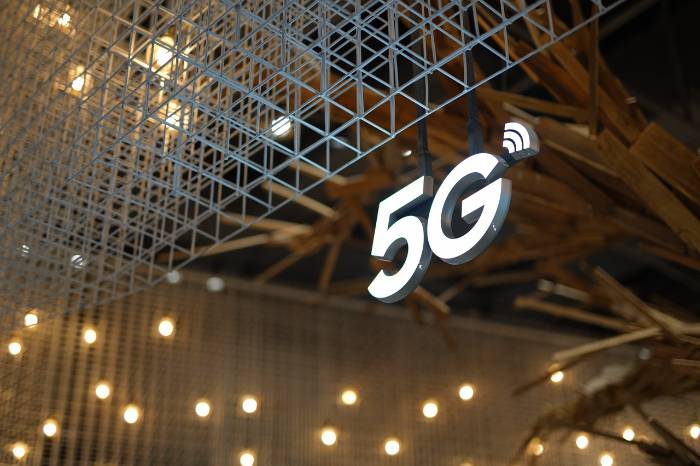Once an emerging technology, the Internet of Things (IoT) has become more commonplace for both consumer and enterprise use. From smart consumer devices to connected vehicles and smart grids, IoT devices offer a lot of possibilities, but it’s not without their challenges.

Vast IoT ecosystems are difficult to manage and support, but 5G and edge computing offer individual and combined solutions that allow organizations to leverage IoT’s potential for high-volume data processing and analytics and real-time insights.
5G: The Next Generation of Mobile Networks
5G is a fifth-generation mobile network that offers an incredible opportunity for consumers and businesses. By sending signals across multiple spectrums, 5G can cover long distances with lower latency, higher speeds, and greater capacity than 4G.
Current cellular technology sends signals over great distances on the low band. These transmissions are valuable for the range, but use a lot of bandwidth. In addition, more network transmissions increase network traffic, increasing lag and leading to performance issues.
Using both low band and high band, 5G delivers performance closer to the end-user and limits network crowding from devices and services. The high band uses less bandwidth and can handle large amounts of data, but it can’t transmit over vast distances and suffers from obstacles in the pathway. The low band can transmit over distance, bridging the gap between the two.
This multiple-spectrum capability allows 5G to provide long-distance transmission to the end-user and offers greater capacity for users without crowded network traffic or poor performance.
Edge Computing: Data Processing and Analytics on the Network Edge
IoT networks rely on cloud-based core data centers to store, process, and analyze data. The data is collected at the network’s edge where the end-users and IoT devices reside, however. Data is processed by sending it from the edge to the data center, then the responses are sent to the edge users and devices. The latency in the transition from the edge to the core and back limits real-time insights for critical tasks.
When these processes take place at the edge, close to the end-users and devices, issues of performance and latency are limited. There’s virtually no transit time, providing efficient real-time insights for agile data-driven actions. IoT devices are also capable of data self-processing, further limiting the data that needs to transfer to the network core.
Ultimately, these two capabilities allow data to be prioritized so that only critical data is sent to the core and stored. The total network traffic is reduced, improving performance and bandwidth.
For this to be possible, networks need edge data centers to handle data processing on the edge of the network. Combined with device self-processing, significant portions of data can be processed and analyzed away from the network core and in siloed portions. If part of the network or individual devices are compromised, it won’t impact the whole of the network.
5G and Edge Computing: Better Together
5G and edge computing enhance IoT network performance individually, but combined, they can deliver their respective capabilities for improved performance and better network connectivity.
The most effective IoT devices are well connected, allowing them to transmit huge amounts of data in a flash. With current technology, that level of connectivity and transmission is difficult to achieve.
5G fills in the gaps to deliver long-distance data transmission, though it can’t provide the connectivity IoT devices need to process large volumes of data. Edge computing processes the data close to the devices and end users to maintain connectivity on the network edge and transmit high volumes of data to nearby devices.
By using both, enterprises can create edge data centers and self-processing devices to collect, process, and analyze data at the network’s edge, creating a smaller network of 5G and IoT devices. Data is collected, processed, and analyzed at the edge, responses are sent back to the device or end user, and vital information is sent to the cloud data center for storage.
5G and Edge Computing Use Cases
5G and edge computing have seen individual adoption. As a cellular technology, 5G is already sweeping the telecommunications industry, but with edge computing, it can provide better mobile broadband service that builds on 4G with up to 100 times the speed and performance.
These technologies have a lot of value for VR/AR in healthcare and gaming. For healthcare, 5G and edge computing can create hyper realistic VR/AR images for training for telemedicine and provide real-time data insights for telesurgery and medical robotics.
For gaming, 5G and edge reduce the latency that can hinder the gaming experience. Most gaming is done on local devices with information processing at the network core, leading to latency that affects gameplay. These technologies keep the data processing and analytics near the devices and end users, providing better performance and speed for gaming.
Drone technology, whether for private or enterprise use, benefits greatly from the capabilities of 5G and edge computing. Speed and agility are paramount for drones, but onboard computational capabilities are limited. Edge computing equipped with 5G can prioritizes the onboard computing tasks for better navigation, communication, and image processing.
Finally, there’s IoT-enabled vehicles. Both autonomous and semi-autonomous vehicles can communicate with each other, the infrastructure, and the network and rely on data for real-time decision making. Both speed and connectivity are vital to smart vehicles to facilitate communication and allow vehicles to make safe and well-informed decisions. 5G and edge computing can enhance performance by ensuring vehicles can communicate with other devices and process data for rapid insights.
5G and Edge Computing: Looking Forward
IoT devices are gaining widespread adoption, both for personal and enterprise use. As the use cases grow and consumers rely on IoT devices, enterprises will need to provide networks with better speed, bandwidth, and performance. The power of 5G and edge computing ensure that enterprises can create agile, responsive, and resilient networks for better IoT ecosystems and enhanced customer experience, whether for multi-player gaming or remote telesurgery.
=================================================================
Author Bio:

Jason is the Head of SEM at SolidRun which is a global leading developer of embedded systems and network solutions, focused on a wide range of energy-efficient, powerful and flexible products which help OEMs around the world simplify application development while overcoming deployment challenges